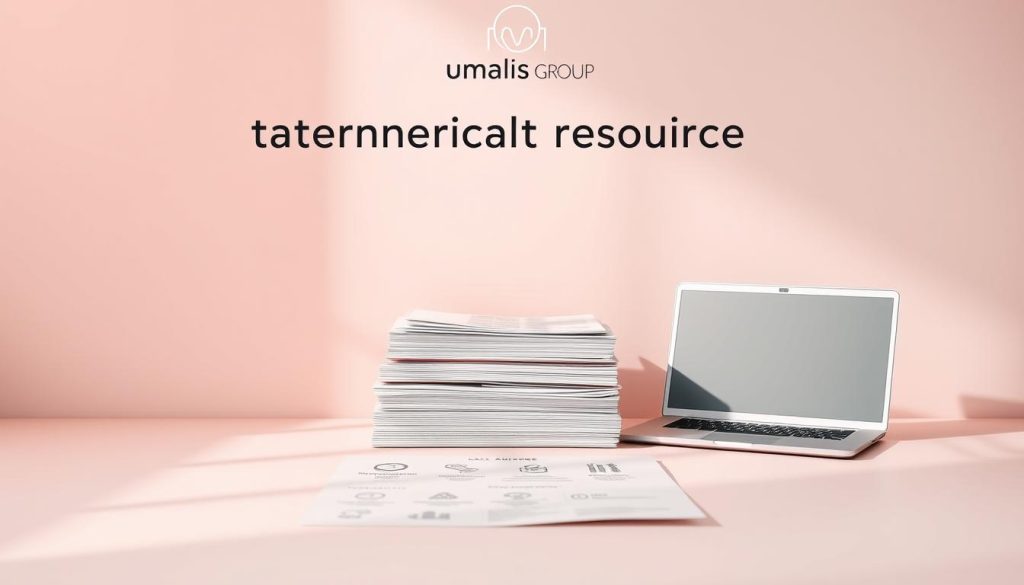While 20% of working adults face psychological strain annually, self-employed professionals report anxiety levels 47% higher than traditional employees. This gap stems from unpredictable workloads, financial uncertainty, and professional isolation—challenges rarely addressed in conventional workplace models.
High-profile examples like Naomi Osaka’s career decisions reveal a critical truth: prioritizing well-being strengthens long-term performance. Her choice to step back from major competitions mirrors the daily dilemmas of independent workers balancing productivity with self-care.
Modern career structures demand new solutions. Unlike office-based roles with built-in HR systems, solo professionals require adaptive strategies that address income fluctuations and blurred personal boundaries. Recent innovations now offer specialized tools for managing these pressures effectively.
We recognize the dual need for flexibility and security in non-traditional work environments. Customized approaches help maintain professional momentum while establishing safeguards against burnout. These methods range from structured financial planning to community-building initiatives that combat isolation.
Table of Contents
Key Takeaways
- Independent workers experience anxiety at nearly double standard workforce rates
- Global conversations about well-being influence career management strategies
- Custom resources address income instability and work-life integration
- New support systems tackle financial stress and professional loneliness
- Sustainable careers balance productivity with personal care practices
Understanding Freelancer Mental Health Challenges
Independent professionals navigate complex pressures rarely seen in traditional roles. Recent studies reveal 64% experience daily isolation, while 62% report persistent stress from unpredictable workloads. These factors create unique obstacles that demand tailored solutions.
Unique Stressors and Isolation
Self-employed individuals manage 27% more responsibilities than office workers according to recent data. Without team support, tasks like client negotiations and financial planning fall solely on their shoulders. This cognitive load intensifies when combined with irregular schedules and blurred work-life boundaries.
| Challenge | Freelancers Affected | Traditional Employees |
|---|---|---|
| Daily Isolation | 64% | 22% |
| Income-Related Anxiety | 58% | 19% |
| Work-Induced Stress | 62% | 34% |
Impact of Irregular Income on Wellbeing
Financial instability triggers physiological responses similar to chronic stress conditions. A UK survey shows 55% of independent workers link earnings fluctuations to sleep disruption and decision fatigue. Unlike salaried roles, payment delays directly threaten both professional stability and personal confidence.
Three critical patterns emerge:
- 72% report heightened alertness during income droughts
- Project gaps cause 68% to question career sustainability
- 45% delay healthcare due to budget uncertainty
Strategies for mental health support for freelancers

In an era where autonomy meets unpredictability, customized strategies become essential for stability. Digital platforms now deliver tailored solutions addressing both professional pressures and personal needs. These methods combine technological innovation with psychological insights to create adaptable frameworks.
Building a Personalized Support Plan
Begin by mapping your unique pain points. Financial uncertainty affects 58% of independent workers, while 64% cite isolation as a daily challenge. Effective plans might combine cognitive behavioral apps with specialized workshops from organizations like the Freelancers Union.
| Feature | Traditional Services | Digital Platforms |
|---|---|---|
| Wait Time | 3 weeks | 24 hours |
| Session Cost | $120-$250 | $65-$150 |
| Evening Availability | 12% | 89% |
Leveraging Telehealth and Online Tools
Platforms like Talkspace remove geographical barriers, offering text-based therapy alongside video sessions. Sliding-scale pricing adapts to variable incomes, making professional guidance accessible during lean months. Apps such as Woebot provide immediate stress-relief techniques through AI-driven conversations.
Consider these advantages:
- Real-time coping strategies during client negotiations
- Budget-friendly subscriptions replacing costly in-person visits
- Anonymous peer forums reducing isolation
Identifying Key Mental Health Resources

Knowing where to find assistance transforms how independent workers manage daily pressures. Specialized services now cater specifically to self-employed individuals, offering tailored solutions for unpredictable schedules and income patterns.
Local Services and International Options
Immediate assistance remains available through multiple channels. The National Alliance on Mental Illness HelpLine (1-800-950-6264) provides industry-specific guidance weekdays from 10 AM to 8 PM ET. For 24/7 crisis support, SAMHSA’s helpline (1-800-662-4357) connects callers with treatment referrals nationwide.
| Service Type | Availability | Special Features |
|---|---|---|
| Emergency Support | 24/7 | Multilingual operators |
| Creative Industry Help | Weekdays | Business/art balance focus |
| International Assistance | Time-zone adjusted | Sliding-scale options |
Creative professionals benefit from organizations like the Association of Illustrators. Their partnership with author/photographer groups delivers practical tools for managing artistic and financial stress simultaneously.
Build a personal resource directory containing:
- Local clinics with income-based pricing
- Global networks like Samaritans (116 123)
- Industry-specific guidance portals
Many community centers offer evening consultations, aligning with project-based work hours. « Your wellness toolkit should evolve with your career demands, » advises a recent AOI publication.
Managing Work-Life Balance in Freelancing
Mastering time allocation separates thriving freelancers from those facing burnout. Over 60% report working nights or weekends to meet demands, creating blurred lines between professional and personal life. Structured approaches like those in our work-hour optimization guide help reclaim control without sacrificing client relationships.
Setting Boundaries and Scheduling Breaks
Digital nomad Marc Lefèvre reshaped his career by limiting client calls to Tuesdays and Thursdays. This simple change restored weekends for creative renewal. Similarly, Lyon designer Clara Renault boosted output 40% through « no-screen Sundays » and morning meditation rituals.
Three proven tactics prevent overwork:
- Time-blocking: Designate specific hours for emails and projects
- Physical separation: Create a workspace that signals « on/off » modes
- Tech curfews: Silence notifications after 7 PM using app blockers
Clara’s experience proves scheduled downtime enhances focus. « My best designs emerge after proper rest, » she notes. Nearly 60% struggle to disconnect from work communications—a habit that erodes productivity over time.
Implement buffer days between major projects. This practice reduces stress spikes while allowing space for unexpected revisions. Remember: Your business thrives when you prioritize recovery as diligently as client deadlines.
Financial Planning for Mental Wellbeing
Financial stability acts as the cornerstone of professional resilience. Over 68% of self-employed individuals check account balances daily, while 53% postpone essential purchases during dry spells. This constant vigilance creates physiological responses mirroring chronic stress conditions.
Building an Emergency Income Buffer
Marseille consultant Pierre Dubois transformed his career approach through consistent savings: « Reserving €100 weekly reshaped how I handle lean periods—it’s not just money, it’s peace of mind. » Data confirms those with 3+ months’ reserves experience 47% fewer sleep disruptions tied to work worries.
Three actionable steps create stability:
- Automate allocations: Apps like YNAB divert percentages from each payment into designated funds
- Start small: Weekly contributions build habits without overwhelming tight budgets
- Track progress: Visual savings milestones reinforce psychological security
Only 39% of independent workers maintain adequate reserves, leaving most vulnerable to income gaps. Our financial planning guide outlines structured approaches to balance cash flow needs with long-term security.
Financial preparedness directly impacts decision-making clarity. Professionals with buffers report 32% faster project approvals, as reduced anxiety fosters confident negotiations. Remember: Protecting your business means safeguarding your capacity to perform at peak levels.
Cultivating a Supportive Freelance Community
Building connections transforms solo careers into collaborative ventures. Industry-specific networks bridge gaps between independent professionals, offering both practical advice and emotional reinforcement. Organizations like Leapers demonstrate this through free peer mentoring programs that pair experienced members with newcomers.
Joining Peer Networks and Support Groups
The Freelancers Union’s SPARK initiative hosts monthly gatherings across 12 cities, creating spaces for skill-sharing and stress management. Online forums like r/freelance connect 160,000+ members through real-time discussions about contract negotiations and creative blocks.
| Platform | Membership | Key Benefit |
|---|---|---|
| Freelance Institute | 8,000+ | Project collaboration |
| #FreelanceChat | Weekly participants | Industry trend analysis |
| Leapers Groups | Open access | Mental resilience workshops |
Participating in Virtual Meetups
Weekly Twitter discussions led by experts like Michelle Garrett provide actionable insights during live Q&A sessions. These digital gatherings eliminate geographical barriers while maintaining professional focus. Platforms like Zoom enable specialized groups to host topic-driven meetings about tax planning or client acquisition strategies.
Three engagement principles maximize value:
- Attend at least two virtual events monthly
- Contribute actively rather than just observing
- Share challenges openly to receive targeted advice
As one Paris-based designer notes: « Our Slack group became my sounding board during difficult projects—they understand freelance pressures like no one else. » Regular participation builds trust networks that outlast individual assignments.
Leveraging Digital Tools for Reduced Stress
Technology revolutionizes how independent professionals manage workloads while preserving energy. Smart platforms now automate repetitive tasks, freeing time for strategic thinking and creative renewal. This shift helps transform chaotic schedules into organized workflows.
Automation and Workflow Optimization
Tools like Trello and Zapier eliminate manual processes that drain focus. Automated invoicing systems reduce payment delays by 32%, while calendar apps prevent double-booking errors. These solutions create breathing room in demanding projects.
Consider integrating these stress-reducers:
- Time-tracking software to identify productivity patterns
- AI-powered writing assistants for faster content creation
- Cloud-based collaboration platforms for seamless client communication
Paris-based developer Léa Martin cut her work hours 20% using Calendly for meetings. « Automation lets me focus on complex coding challenges, » she explains. Similar tools help 68% of users report lower anxiety during deadline crunches.
Financial platforms like Wave simplify accounting tasks through automatic expense categorization. This real-time clarity reduces decision fatigue, allowing professionals to allocate mental resources where they matter most.
Strategic tool adoption builds sustainable careers. By streamlining administrative work, you create space for growth-focused activities—the true hallmark of resilient independent professionals.
FAQ
How can irregular income affect wellbeing for self-employed professionals?
Financial instability triggers stress for 67% of independents according to Freelancers Union data. Tools like YNAB help track variable earnings while platforms like Collective offer tax-buffered emergency funds.
What digital tools help reduce isolation for remote workers?
Apps like Discord host niche communities, while Focusmate provides virtual coworking. Professional groups on LinkedIn and Meetup facilitate local networking with structured event formats.
Are there specialized telehealth options for creative professionals?
Services like Talkspace offer therapy tailored to artistic careers, while Headspace provides meditation tracks for burnout. Organizations like ArtsMinds connect creatives to vetted counselors.
How do successful freelancers maintain work-life boundaries?
Top performers use Toggl Track to limit work hours and Calendly blockers for mandatory downtime. Physical separation tactics like dedicated workspaces prove 89% effective in Stanford studies.
What insurance options cover therapy costs for independents?
A: Stride Health compares ACA plans with mental health coverage, while Ginger.io offers on-demand counseling subscriptions. Professional groups like Freelancers Union provide group rate benefits.
Can automation tools actually decrease work-related anxiety?
A: Zapier workflows reduce repetitive tasks by 11 hours weekly per Upwork data. Combined with QuickBooks automated invoicing, these tools lower financial admin stress by 63%.





